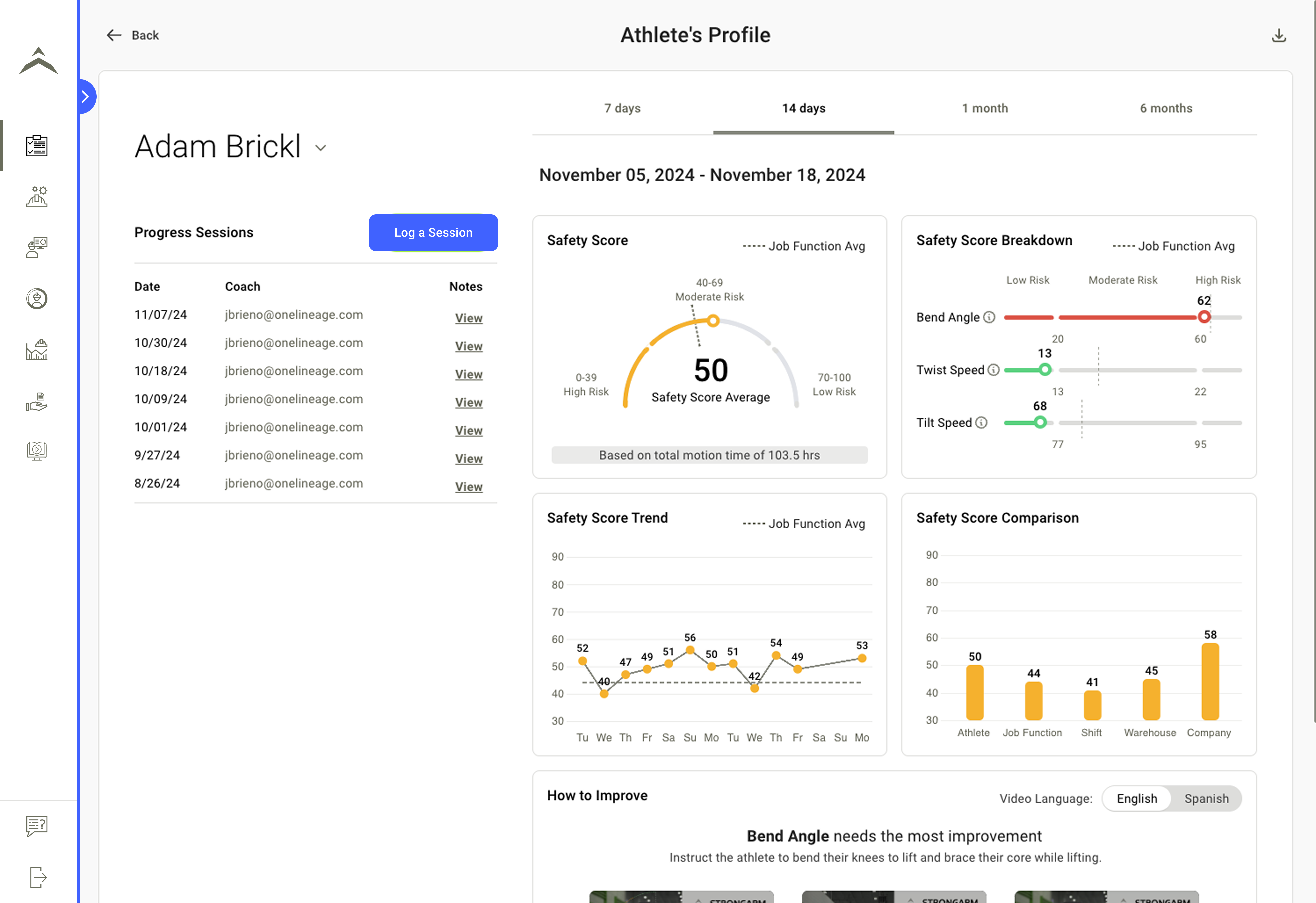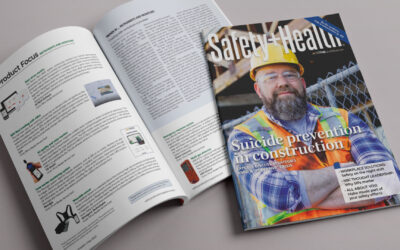In 2024 alone, Strongarm Technologies logged more than 1.5 million hours of real-world movement data from frontline workers across warehouses, distribution centers, manufacturing sites, and logistics hubs.
That number is staggering, and it tells an even more powerful story. For every hour logged, a person lifted packages, twisted to load pallets, reached overhead, bent at the waist, and did it all in a fast-paced, physically demanding environment. The data collected by our SafeWork Sensors unlocks patterns that help prevent injuries before they happen. With this data, Strongarm turns real-time insight into safer, healthier workplaces. And Strongarm’s customers build better businesses by doing right by their workforces.
The State of Movement on the Frontline in 2024
Injuries among frontline workers remain stubbornly high and costly.
According to BLS data, musculoskeletal injuries (MSIs), especially those in the back, shoulders, and knees, accounted for 33% of all workplace injuries in 2024. These injuries are painful for workers, disruptive for operations, and expensive for businesses, costing an average of $41,000 per injury in direct and indirect expenses.
Our 1.5 million hours of movement data from 2024 revealed a clear pattern:
- Risky movements are familiar, but predictable.
- Workers often don’t realize they’re putting themselves at risk until it’s too late.
- The risk of injuries can be significantly and quickly reduced with small changes in common and repetitive worker movements.
The earlier companies act, the better the outcomes.
What the Data Shows: Small Changes, Big Gains
Here are some of the key insights we uncovered from 2024’s data.
1. Most Risk Happens During Routine Tasks
The majority of injuries are caused by repeated, day-to-day movements done with poor form, not one-off heavy lifts or freak accidents.
Across all our sites in 2024, the riskiest movements were:
- Deep bends at the waist
- Twisting while carrying weight
- Reaching with extended arms above the head
These are everyday movements. The problem is how they’re done — and how often.
2. Highest Risk Happens at Consistent Times
Our data showed two key time periods when workers were most at risk for injury across almost every site:
- Early in shifts, when workers haven’t warmed up yet.
- Toward the end of long shifts, when fatigue sets in.
That tells us two things:
- Workers benefit from warm-up training and movement reminders early on.
- Improved scheduling and task rotation can significantly reduce fatigue and, in consequence, injury risk.
3. Coaching and Feedback Lead to Rapid Improvement
Sites that paired SafeWork Sensors with bite-sized training — primarily through Session Summaries — saw a 35–50% reduction in risky movements within the first 30 days.
The key? Real-time feedback. Traditional safety talks and training sessions don’t help workers internalize better habits as well as receiving alerts as they move. The haptic alerts provided by the SafeWork Sensor are more impactful because workers instantly feel the difference between dangerous and correct movements.
Why This Matters: Safety Is a Business Strategy
Let’s talk about the business impact of all this.
Safety is often merely a compliance requirement. However, Strongarm’s customers find that when safety is a strategic investment see tangible returns in reduced injury rates and retention, productivity, and even morale.
Here’s how:
1. Fewer Injuries = Lower Costs
The financial math is simple. When you reduce the number and severity of injuries, you:
- Spend less on workers’ comp claims
- Avoid OSHA fines and citations
- Minimize lost-time incidents and temp worker replacement costs
Our customers who implemented the complete SafeWork Program—sensors, training, and a data dashboard—reported up to 64% fewer injuries and 6-7 figures in savings in just the first year.
2. A Safer Workplace Means Better Retention
Frontline work is hard. When a company shows it genuinely cares about keeping workers safe — and proves it by investing in tools that help them go home healthy — workers stay longer.
In 2024, several of our customers saw improved retention in their highest-risk roles by 15–20% after adopting SafeWork. That translates to less time spent hiring, training, and onboarding replacements — and more time building a stable, experienced team.
3. Productivity Rises When Risk Falls
Injured workers can’t work at full capacity. But even workers who aren’t technically injured often underperform when they’re sore, fatigued, or anxious about their physical well-being.
We’ve seen that output increases when workers feel physically supported, and their movements are efficient and low-risk. Fewer breaks are needed, rework drops and teams move faster and safer.
One customer even told us that implementing SafeWork Sensors helped them meet their peak-season quotas more consistently — not because people worked harder, but because they worked smarter.
Culture Is the Real Game-Changer
One outcome that’s harder to measure in dollars — but might be the most important of all: culture change.
When safety becomes personal — when it stops being just posters and policies and starts being something workers feel, see, and act on daily — everything shifts.
In 2024, we watched customers move from a top-down enforcement model to a bottom-up safety culture. Here’s what that looked like:
- Workers competed to improve their Safe Movement Scores.
- Supervisors recognized team members who made the most significant improvements.
- New hires adopted safe habits from day one — thanks to on-sensor training and early coaching.
- Sites began celebrating progress, not just flagging problems.
Engagement like this can’t be forced, but it can be inspired when workers see that the company is serious about their well-being and gives them helpful tools.
Final Thoughts: 1.5 Million Hours — And We’re Just Getting Started
The more we learn from movement data, the clearer the picture becomes: when you take care of your people, your business takes care of itself.
The frontline workforce is the heartbeat of many industries—retail, logistics, grocery, manufacturing, airlines, and beyond. Their safety isn’t just a moral obligation—it’s a competitive advantage.
In 2024, 1.5 million hours of movement told us that:
- Risk is real, but it’s manageable.
- Workers want to do the right thing and need the right tools.
- Culture drives behavior, and behavior drives results.
At StrongArm, we’re proud to turn data into action and movement into momentum.
Let’s make 2025 the safest, smartest year yet.
Want to see what this data could mean for your workforce?




